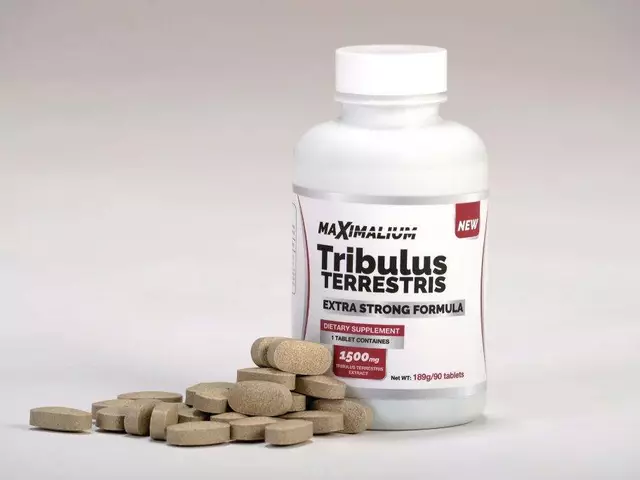JAK Inhibitor Comparison Tool
Compare JAK Inhibitors
Compare the key differences between Baricitinib, Tofacitinib, and Upadacitinib to understand which JAK inhibitor might be most appropriate for your condition.
Baricitinib
Primary Targets: JAK1/JAK2
RA Dose: 4mg daily
COVID-19: Approved for hospitalized patients
Half-life: ~12 hours
Common Side Effects: Infections, headache, elevated LFTs
Tofacitinib
Primary Targets: JAK1/JAK3
RA Dose: 5mg twice daily
COVID-19: Not approved
Half-life: ~3 hours
Common Side Effects: Diarrhea, nasopharyngitis, lipid rise
Upadacitinib
Primary Targets: JAK1 (selective)
RA Dose: 15mg daily
COVID-19: Not approved
Half-life: ~9 hours
Common Side Effects: Nausea, acne, elevated CPK
Comparison Details
| Attribute | Baricitinib | Tofacitinib | Upadacitinib |
|---|---|---|---|
| Primary JAK Targets | JAK1/JAK2 | JAK1/JAK3 | JAK1 (selective) |
| Approved for RA? | Yes (4mg daily) | Yes (5mg twice daily) | Yes (15mg daily) |
| COVID-19 Indication | Approved (hospitalized patients) | Not approved | Not approved |
| Half-life | ~12 hours | ~3 hours | ~9 hours |
| Common Side Effects | Infections, headache, elevated LFTs | Diarrhea, nasopharyngitis, lipid rise | Nausea, acne, elevated CPK |
| Key Safety Considerations | Black-box warning for serious infections, thrombosis | Black-box warning for serious infections, thrombosis | Black-box warning for serious infections, thrombosis |
| Renal Adjustment | 2mg daily if eGFR < 30 | 11mg daily if eGFR < 50 | Not specified |
Important note: This comparison tool summarizes key characteristics based on current clinical evidence. Always consult with your healthcare provider to determine the most appropriate treatment for your specific condition.
Disclaimer: This tool is for educational purposes only and does not replace professional medical advice. Treatment decisions should be made in consultation with a qualified healthcare provider.
When you hear the name Baricitinib, you might wonder how a tiny pill can calm an overactive immune system. The drug has become a hot topic because it tackles everything from rheumatoid arthritis to severe COVID‑19, but the science behind it isn’t always clear. Below we break down what Baricitinib is, how it talks to your immune cells, where it’s approved, and what you should watch out for.
What Is Baricitinib?
Baricitinib is an oral Janus kinase (JAK) inhibitor that selectively blocks JAK1 and JAK2 enzymes, thereby modulating inflammatory signaling pathways. Developed by EliLilly, the molecule received its first FDA approval in 2018 for moderate‑to‑severe rheumatoid arthritis (RA). Since then, the drug’s immune‑modulating properties have earned it emergency use authorizations for treating hospitalized patients with COVID‑19 who need supplemental oxygen.
How Baricitinib Works on the Immune System
The immune system relies on cytokines-small proteins that tell cells when to activate, proliferate, or die. Many cytokines signal through the JAK‑STAT pathway. When a cytokine binds its receptor, JAK enzymes (JAK1, JAK2, JAK3, TYK2) phosphorylate STAT proteins, which then travel to the nucleus to turn on inflammatory genes.
Baricitinib’s inhibition of JAK1 and JAK2 effectively blunts this cascade. By reducing STAT activation, the drug lowers production of key inflammatory mediators such as interleukin‑6 (IL‑6), interferon‑γ, and tumor necrosis factor‑α (TNF‑α). The result is a calmer immune landscape-less joint swelling in RA, and a dampened “cytokine storm” in severe viral infections.
Because the drug does not shut down JAK3 or TYK2 completely, it preserves some immune functions, which is why it’s generally better tolerated than broad‑spectrum immunosuppressants.
Approved Uses and Clinical Evidence
Rheumatoid arthritis is a chronic autoimmune disease characterized by joint inflammation, pain, and progressive damage. Multiple phaseIII trials (e.g., RA‑BEACON, RA‑COMPOSE) showed that Baricitinib 4mg daily reduced the American College of Rheumatology 20% response (ACR20) rates by 30‑40% compared with placebo.
For COVID‑19, the ACTT‑2 trial combined Baricitinib with remdesivir in hospitalized patients. The combination shortened median recovery time from 8 to 7 days and reduced mortality by roughly 10% in patients on high‑flow oxygen. The FDA’s emergency use authorization (EUA) in 2020 was based on these findings, and the full approval in 2024 solidified its role for patients needing supplemental oxygen but not on invasive ventilation.
Beyond RA and COVID‑19, ongoing studies explore Baricitinib for alopecia areata, systemic lupus erythematosus, and even certain cancers where JAK‑STAT signaling drives tumor growth.

Safety Profile and Common Side Effects
Blocking JAK pathways can tip the immune balance, so safety monitoring is crucial. The most frequently reported adverse events include:
- Upper respiratory infections
- Headache
- Nausea
- Elevated liver enzymes (ALT/AST)
Serious concerns revolve around increased risk of opportunistic infections (e.g., herpes zoster), thrombosis, and elevated lipid levels. The FDA has issued black‑box warnings for JAK inhibitors, highlighting the need for:
Patients with a history of cardiovascular disease or active malignancy should discuss alternatives with their physician before starting Baricitinib.
How Baricitinib Stacks Up Against Other JAK Inhibitors
Several JAK inhibitors share the same target family, but they differ in selectivity, dosing, and approved indications. Below is a quick comparison:
| Attribute | Baricitinib | Tofacitinib | Upadacitinib |
|---|---|---|---|
| Primary JAK Targets | JAK1/JAK2 | JAK1/JAK3 | JAK1 (selective) |
| Approved for RA? | Yes (4mg daily) | Yes (5mg twice daily) | Yes (15mg daily) |
| COVID‑19 Indication | Approved (hospitalized patients) | Not approved | Not approved |
| Half‑life | ~12hours | ~3hours | ~9hours |
| Common Side Effects | Infections, headache, elevated LFTs | Diarrhea, nasopharyngitis, lipid rise | Nausea, acne, elevated CPK |
For patients who need a JAK inhibitor with proven COVID‑19 benefit, Baricitinib remains the only option among the three.
Practical Tips for Patients and Clinicians
- Dosage: The standard adult dose for RA and COVID‑19 is 4mg once daily, taken with or without food.
- Renal Adjustment: Reduce to 2mg daily if eGFR<60mL/min/1.73m².
- Drug Interactions: Avoid concurrent strong CYP3A4 inhibitors (e.g., ketoconazole) that can raise Baricitinib levels.
- Vaccinations: Administer inactivated vaccines (flu, COVID‑19 boosters) at least 2 weeks before starting therapy.
- Monitoring: CBC, liver enzymes, lipid panel, and serum creatinine every 12 weeks for the first year.
Open communication with a rheumatologist or infectious disease specialist ensures that benefits outweigh risks, especially for those with comorbid conditions.
Future Directions and Ongoing Research
Scientists are now probing Baricitinib’s role beyond inflammation. Early-phase trials suggest it may modulate interferon responses in viral infections other than SARS‑CoV‑2, such as influenza and respiratory syncytial virus (RSV). In oncology, researchers are testing low‑dose Baricitinib as part of combination regimens to curb cytokine release syndrome (CRS) after CAR‑T cell therapy.
As more real‑world data accumulate, guidelines are likely to refine dosing strategies, especially for the elderly and patients with chronic kidney disease. Keep an eye on the upcoming 2026 ACR (American College of Rheumatology) updates-they’ll probably incorporate new safety thresholds based on the latest longitudinal studies.
Frequently Asked Questions
What conditions is Baricitinib approved to treat?
Baricitinib is FDA‑approved for moderate‑to‑severe rheumatoid arthritis and for hospitalized COVID‑19 patients who require supplemental oxygen but are not on invasive ventilation.
How does Baricitinib affect the immune system?
The drug blocks JAK1 and JAK2 enzymes, which reduces STAT‑mediated signaling of pro‑inflammatory cytokines like IL‑6 and TNF‑α, leading to a dampened immune response.
Can I take Baricitinib if I have a history of blood clots?
Because JAK inhibitors carry a clotting risk, patients with prior deep‑vein thrombosis or pulmonary embolism should discuss alternatives with their doctor before starting Baricitinib.
Is Baricitinib safe to use with other COVID‑19 treatments?
Clinical trials have combined Baricitinib with antivirals such as remdesivir and with corticosteroids like dexamethasone without major safety signals. However, doctors should monitor liver enzymes and blood counts closely.
How often should laboratory tests be performed while on Baricitinib?
Standard practice is to check CBC, liver function tests, serum creatinine, and lipid panel every 12 weeks for the first year, then at least twice a year thereafter.








RJ Samuel October 17, 2025
Honestly, I think the hype around Baricitinib is overblown.
Nickolas Mark Ewald October 17, 2025
I get where you're coming from, but the data does show real benefits for some patients. The trials mentioned in the article were pretty solid, and many doctors have seen improvements. Still, it's good to stay cautious.
Sara Werb October 17, 2025
Are you kidding me??? The pharma giants and the govt are hiding the FULL story!!! They push Baricitinib like a miracle drug while they KNOW the long‑term risks are being swept under the rug!!! It's all about profit, not patients!!!
Roberta Makaravage October 17, 2025
Baricitinib, as a JAK1/JAK2 inhibitor, occupies a unique niche in modern pharmacology.
Its mechanism of attenuating the JAK‑STAT cascade is not merely a biochemical curiosity but a deliberate intervention in the language of cellular communication.
When cytokines shout 'activate', Baricitinib whispers 'silence', thereby preventing the cascade of inflammatory gene expression.
One must appreciate that this is a double‑edged sword: dampening harmful inflammation while preserving essential immune surveillance.
Clinical trials such as RA‑BEACON have demonstrated statistically significant ACR20 improvements, which translates into tangible relief for patients suffering from joint destruction.
Equally compelling is the ACTT‑2 data, where the combination with remdesivir shaved a day off recovery time and modestly lowered mortality.
However, the drug is not a panacea; black‑box warnings remind us that JAK inhibition can predispose to opportunistic infections, thrombotic events, and dyslipidemia.
Physicians must therefore adopt a holistic view, integrating baseline screenings for TB and hepatitis alongside routine CBC and lipid panels.
From an ethical standpoint, prescribing Baricitinib without thorough patient education would be a breach of the Hippocratic oath.
Patients deserve to know that while the pill can quell a cytokine storm, it may also blunt their natural defenses against latent viruses.
Moreover, the economic burden cannot be ignored; insurance coverage varies, and out‑of‑pocket costs can be prohibitive for many.
In the broader context of JAK inhibitor competition, Baricitinib's longer half‑life and proven COVID‑19 indication set it apart from its peers like Tofacitinib and Upadacitinib.
Yet, the choice of agent should be individualized, considering comorbidities such as cardiovascular disease or active malignancy.
Philosophically, we are reminded that medical interventions are extensions of human intent, and intent must be guided by both evidence and compassion.
Thus, Baricitinib exemplifies modern medicine's capacity to intervene precisely, but also its responsibility to monitor vigilantly.💊🧬
Lauren Sproule October 18, 2025
Thanks for the thorough breakdown! i appreciate how you laid out both the benefits and the cautions. it's good to remember the patient perspective and the cost factors. overall, a balanced view helps everyone.
Malia Rivera October 18, 2025
Baricitinib's story is another example of how American biotech pushes drugs worldwide without enough long‑term scrutiny.
lisa howard October 18, 2025
Oh dear, you think the whole system is a con? The truth is far messier-every breakthrough comes with shadows, and pointing fingers at a single nation ignores the global collaboration that actually made Baricitinib possible. From the labs in Dublin to the trials in Brazil, it’s a tapestry of effort, not just a US‑centric plot.
Cindy Thomas October 18, 2025
Honestly, most people miss the nuance: Baricitinib isn’t a magic bullet, but it isn’t useless either 🙂. The side‑effect profile is manageable if you keep tabs on labs, and the COVID‑19 data still holds up in real‑world settings.
Kate Marr October 18, 2025
True, but let’s not forget that the U.S. FDA’s quick authorizations saved countless lives 🇺🇸👍.
James Falcone October 18, 2025
Baricitinib shows why we need strong American drug pipelines.
Frank Diaz October 18, 2025
While patriotism is admirable, reducing complex therapy decisions to national pride oversimplifies the science. Efficacy and safety must remain the guiding principles, not geopolitical sentiment.
Mary Davies October 18, 2025
I'm curious how Baricitinib will fare in long‑term real‑world studies-will the hype survive the data?
Valerie Vanderghote October 18, 2025
Ah, the perpetual dance of anticipation and disappointment! The medical community loves to crown a drug as the next breakthrough, only to later uncover hidden pitfalls. With Baricitinib, we must monitor not just the immediate COVID outcomes but also the subtle shifts in patient immunity over years, the emerging patterns of thrombotic events, and the financial strain on healthcare systems. If we ignore these downstream effects, we risk repeating history where short‑term wins mask long‑term costs. So, keep your eyes open, and demand rigorous post‑marketing surveillance.